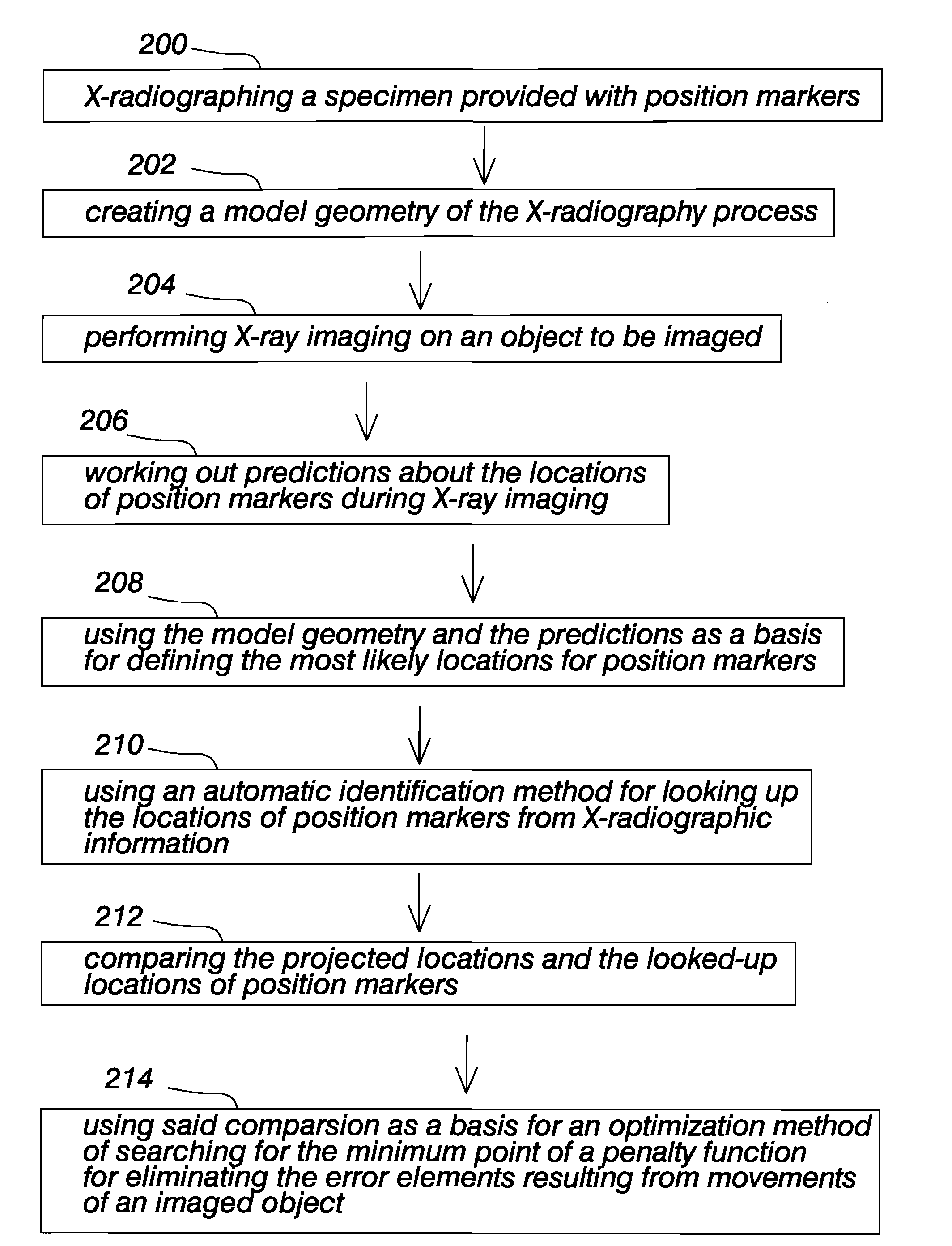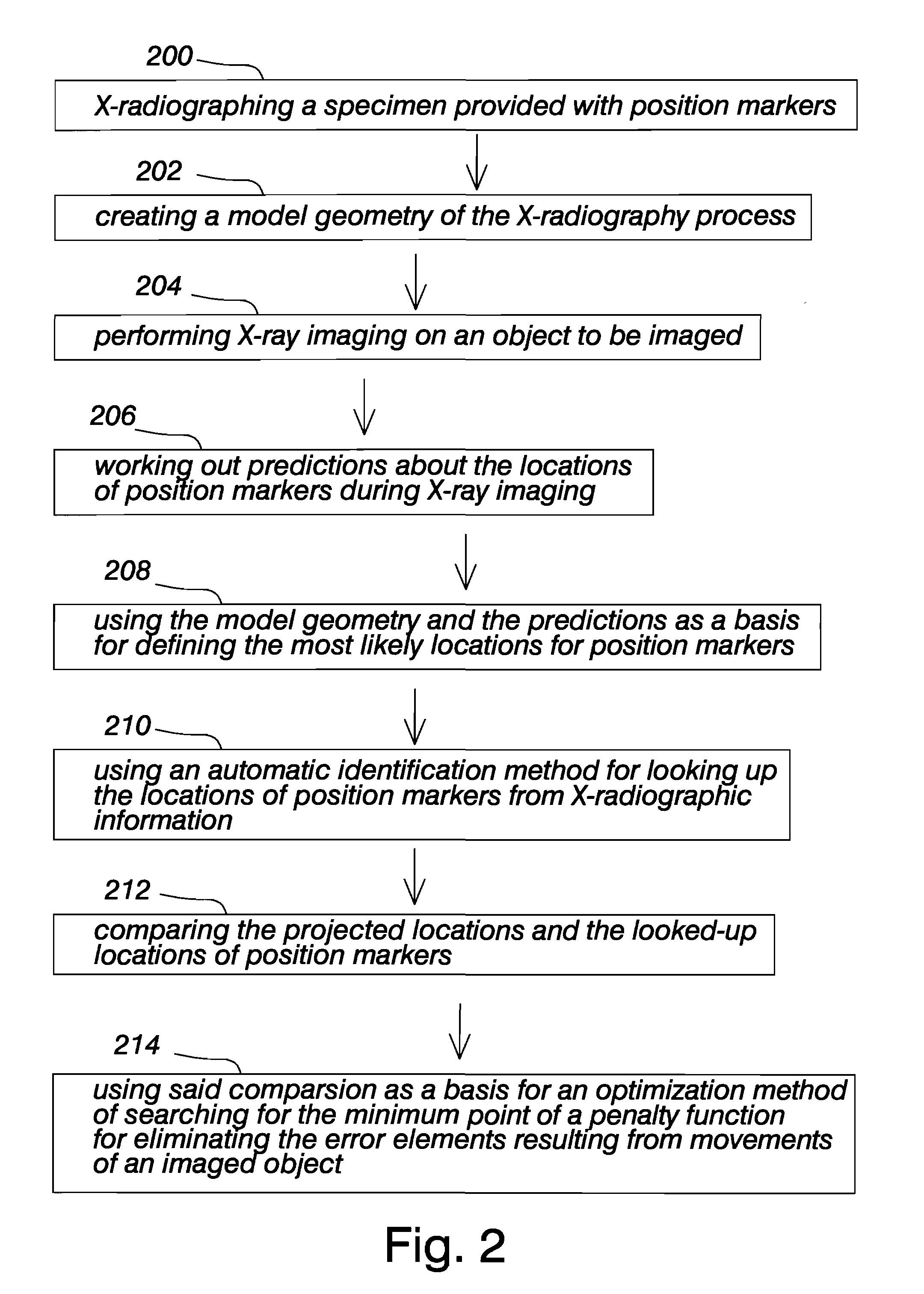Method and Apparatus for Medical X-radiography
- Summary
- Abstract
- Description
- Claims
- Application Information
AI Technical Summary
Benefits of technology
Problems solved by technology
Method used
Image
Examples
Embodiment Construction
[0012]Embodiments of the invention are most conveniently used in medical X-radiography, wherein a patient is not totally exposed to radiation from every direction, since the amount of radiation received by the patient must be minimized or since there is no actual reason to irradiate the patient except from within a limited angle. The imaging performed by means of a panoramic imaging apparatus in dental X-radiography is a good example of medical X-ray imaging with no need to irradiate a patient except from within a limited angle in order to enable capturing necessary images of the patient's denture or elsewhere from the head and neck area.
[0013]Referring to FIG. 1, there is shown an exemplary view of a panoramic dental imaging apparatus, enabling the compilation of three-dimensional X-radiographic information about an imaged object. A panoramic imaging apparatus 10 shown in FIG. 1 includes a vertical member 11 from which extends a horizontal member 10, in support of which is suspende...
PUM
 Login to View More
Login to View More Abstract
Description
Claims
Application Information
 Login to View More
Login to View More - R&D
- Intellectual Property
- Life Sciences
- Materials
- Tech Scout
- Unparalleled Data Quality
- Higher Quality Content
- 60% Fewer Hallucinations
Browse by: Latest US Patents, China's latest patents, Technical Efficacy Thesaurus, Application Domain, Technology Topic, Popular Technical Reports.
© 2025 PatSnap. All rights reserved.Legal|Privacy policy|Modern Slavery Act Transparency Statement|Sitemap|About US| Contact US: help@patsnap.com



